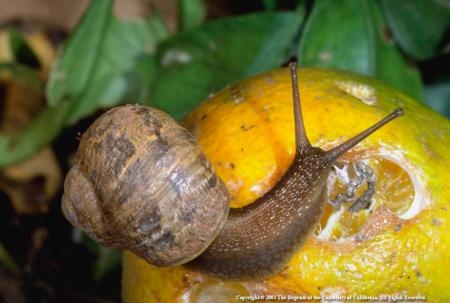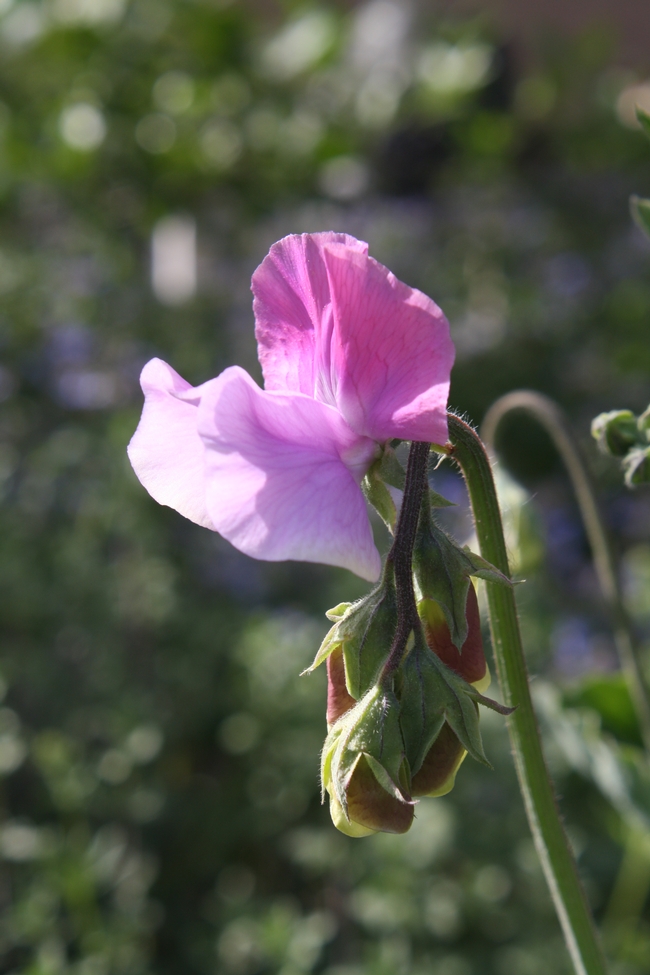Posts Tagged: snail
The Romance of Sweet Peas
October is the month to plant sweet pea seeds and I can hardly wait to get mine in the ground! In 1817, poet John Keats wrote “Here are sweet peas, on tip toe for a flight; With wings of gentle flush o’er delicate white, And taper fingers catching at all things, To bind them all about with tiny rings.”
Sweet peas, which have the descriptive Latin name Lathyrus odoratus, are incredibly gorgeous and powerfully perfumed. Often we smell them before we see the blossoms and the perfume invites us to find them, lifting our spirits and making us smile. Having a passion for sweet peas, I’ve been growing them annually for nearly 50 years.
It’s ideal to plant the seeds in an area where they can climb and be supported. Cement wire against a fence or wire between two poles in an open area will work well. The soil needs to be amended with compost and manure.
These tiny, round, hard seeds need to be soaked in water overnight. Soaking them softens the hard seed shell and encourages them to sprout. My grandmother placed her seeds on wet paper napkins on a tray in the basement and left them for several days until they were swollen and ready to “pop.” I use the same technique, using paper towels and an old cookie sheet. I carry that into the garden and place each seed individually 3 inches apart and ½ inch deep, thinning to 6 inches apart as they grow.
As soon as the plants emerge, grab some snail bait, as slugs and snails will feast on these seedlings! As the vines grow, they may need to be wound between the wire support until the tendrils grab hold. At this point, there’s not much to do until mid-April when the vines will vigorously grow and the incredible flowers appear. Sweet peas need to be picked daily for continuous blooming. The flowers will scent your home and are welcome gifts for friends and neighbors. As the vines turn brown and dry in June, there will be pods you can collect seeds for the following October. I’ve found that everyone loves sweet peas! Now, I’ve got to get busy!
Boost sustainability by eating low on the food chain
Some people believe eating low on the food chain is one way to help preserve the environment. And, in fact, livestock production consumes much more land and other resources per calorie than the production of plant foods.
A story on the website Bohemiam.com suggests it also makes sense to eat insects for improved dietary sustainability. Insects and other arthropods constitute an edible resource of tremendous biomass, the article said. Ants alone reportedly make up about a third of all terrestrial animal biomass.
Iowa State University's entomology department provides recipes for "rootworm beetle dip," which includes a cup of dried and roasted beetles. The site also has recipes for "banana worm bread," chocolate chip cookies with dried crickets crumbled into the dough and "mealworm fried rice," calling for equal parts rice and larvae.
Writer Alistar Bland got information for his story about the consumption of snails from a UC Davis website. Mainly known as a garden pest, snails were introduced into California from France in the 1850s as a food source. Snails may be sautéed in butter and garlic and served in the shell.
An eight-page UC publication is available for $1.50 from the UC Agriculture and Natural Resources catalog with instructions for raising and preparing snails for food.

Common garden snails can be a sustainable food source.


